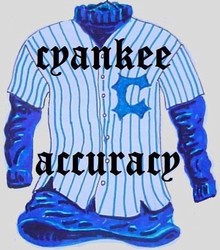Bill Calfee
Gun Fool
Do long RFBR barrels shoot better?
CYA friends:
Given that all else about a RFBR gun is perfect, would a long barrel shoot better than a short barrel, proportionally, as the difference in their length varies?
Was talking with Tom W today.......Tom has acquired a 30 inch, Dan Muller MI and he's contemplating seeing if he can get 27 inches from it.
The reason is, he and Chuck Morrell test a lot of ammo together and Tom said what amazed him about the Inferno's 27 1/4" barrel, was the fact that, although it has its ultimate preferences, it will shoot about anything exceptionally well.
______________________________
I've always felt we get the best rimfire accuracy if the bullet is allowed to "coast" for several inches after the peak gas pressure has worked.
Of course the bullet doesn't actually coast, but, past 18 inches or so, the gas pressure is reduced greatly....
The further, within reason, that that bullet is allowed to coast, past the peak pressure, the more the barrel itself plays a role in accuracy.
Likewise, the nearer the barrel length is to the peak pressure, the more the quality, uniformity, of the ammo plays in accuracy.
_________________________________
I've always believed a 16 inch barrel will shoot as good as a 26 inch barrel, with absolutely perfect ammo.
________________________________
So.
If we fire two rounds in a 27 inch barrel, that have 20 FPS difference in velocity as the bullets pass the 18" mark, do they still have the same 20 FPS difference in velocity when they exit the muzzle of our 27 inch barrel?
Of course we can't test this.........at least not anyway I know of....
There's a lot of things to think about here:
One would think that the slower bullet, which has less gas pressure, would actually slow down even further when it exited the 27 inch barrel.
But, with the lead bullets we use, and the velocities we run, will it actually slow down more than the 20FPS difference?
____________________________
I've got kind of a goofy theory about this...............
Your friend, Bill Calfee
CYA friends:
Given that all else about a RFBR gun is perfect, would a long barrel shoot better than a short barrel, proportionally, as the difference in their length varies?
Was talking with Tom W today.......Tom has acquired a 30 inch, Dan Muller MI and he's contemplating seeing if he can get 27 inches from it.
The reason is, he and Chuck Morrell test a lot of ammo together and Tom said what amazed him about the Inferno's 27 1/4" barrel, was the fact that, although it has its ultimate preferences, it will shoot about anything exceptionally well.
______________________________
I've always felt we get the best rimfire accuracy if the bullet is allowed to "coast" for several inches after the peak gas pressure has worked.
Of course the bullet doesn't actually coast, but, past 18 inches or so, the gas pressure is reduced greatly....
The further, within reason, that that bullet is allowed to coast, past the peak pressure, the more the barrel itself plays a role in accuracy.
Likewise, the nearer the barrel length is to the peak pressure, the more the quality, uniformity, of the ammo plays in accuracy.
_________________________________
I've always believed a 16 inch barrel will shoot as good as a 26 inch barrel, with absolutely perfect ammo.
________________________________
So.
If we fire two rounds in a 27 inch barrel, that have 20 FPS difference in velocity as the bullets pass the 18" mark, do they still have the same 20 FPS difference in velocity when they exit the muzzle of our 27 inch barrel?
Of course we can't test this.........at least not anyway I know of....
There's a lot of things to think about here:
One would think that the slower bullet, which has less gas pressure, would actually slow down even further when it exited the 27 inch barrel.
But, with the lead bullets we use, and the velocities we run, will it actually slow down more than the 20FPS difference?
____________________________
I've got kind of a goofy theory about this...............
Your friend, Bill Calfee



